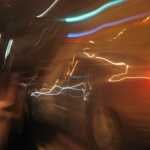
Churches represent many things, the most important being safe havens. The church has long been a pillar of the black community, serving as an insulated safe house protecting its inhabitants from hate. People turned to God for support and guidance in dire times, as his home—the church—became their own. If nothing else, a church signals a place of peace—an escape from demons. At least, it's supposed to.
Evil struck again in Charleston, S.C. last night, as suspected gunman Dylann Roof killed nine people during a bible study session at Emanuel African Methodist Episcopal Church. Continuously, the solitude of the church has been tested by unadulterated hate. Last night’s massacre is a grim reminder that not even places of sanctity are sheltered from evil. In fact, that distinction makes them stand out as points of vulnerability to domestic terrorists—which is what Dylann Roof is.
As the oldest African Methodist Episcopal church in the South, Emanuel African Methodist Episcopal Church is a historic religious institution. As such, violence is part of that history. Established in 1816 following a racial divide between members of Methodist Episcopal Church’s congregation, the church was destroyed by arson following accusations that it housed the planning of a slave insurrection. Although the church was rebuilt, state law prohibited the existence of black churches in 1834. As the result of hate and fear which manifested as regulation, members of the congregation were forced into secret meetings until the Civil War concluded three decades later. Legislature became the weapon of choice against the black church, but domestic terrorists—in South Carolina and across the South—would revert back to more barbaric measures in the following years.
Black churches were satellites of hope during the Civil Rights Movement, critical in the planning and execution of the fight for equality. Following the response to a circuit court ruling banning NAACP activity in Alabama, Bethel Baptist Church became the headquarters for the Alabama Christian Movement for Human Rights. In 1956, a string of church bombings commenced in the city, with Bethel Baptist Church enduring three attacks between 1956 and 1962. A year later, in arguably the most notable church bombing in American history, four Klansmen killed four girls at Birmingham’s 16th Street Baptist Church.
Of the 50 or so bombings motivated by race in Birmingham between 1947 and 1965, nearly half targeted either churches or the homes of ministers. This trend continued beyond the Civil Rights Movements era, rearing its despicable head once more during the 1990s. Church fires in the Southeast United States were so frequent during a mid-decade stretch that the Department of Justice opened an investigation into the matter, and the National Trust for Historic Preservation placed black churches on its endangered list. At the time, federal officials said they were unable to find enough substantive evidence to categorize the attacks as some sweeping conspiracy. But attacking churches has never been a conspiracy, rather part of an overt culture of hate steeped in history and heritage that the efforts of federal authorities can’t extinguish.
Mere hours after Barack Obama was elected President of the United States in 2008, Macedonia Church of God in Christ was burned in Springfield, Mass. Just as the nation appointed its first black president, three men destroyed a church with a predominantly black parish. Despite one of the men (all of whom were ultimately convicted) dismissing his actions as "one night of stupidity," the attack constituted a repetition of history with similarities too strong to ignore. It was a hate crime in the same vein as the shooting at Emanuel AME: a strike against a structure utilized for tranquility. President Obama echoed this in his statement on the shooting, stressing that this sentiment is the shooting’s most horrific element.
"There is something particularly heart breaking about a death happening in a place in which we seek solace and we seek peace, in a place of worship," the president said with grief. Somehow this act of terrorism—let’s continue to call it what it is—seems as American as the right to bear arms, not that that makes it any easier to digest.
Snakes have maintained an ominous presence in the Bible dating back to the Book of Genesis and the Garden of Eden. The phrase "snake in the grass" alludes to an enemy in disguise—a concealed danger. Dylann Roof watched a group of innocent people pray for roughly an hour before murdering them in cold blood, reportedly reloading five times during the massacre. He was a fatal threat posing as a worshipper—a snake who preyed on those innocent people at their most defenseless. It revives a question that history has forced the black community to ask on several occasions: Where can you find safety if a church can’t even offer that protection?
This troubling query shouldn’t shake your faith in religion, but it should make you question humanity and the construct of white supremacy, especially in America. Because remember, I'm writing this as a Confederate flag looms defiantly over South Carolina’s state capitol like a burning cross on a church lawn.
Julian Kimble is a contributing writer. Follow him on @JRK316.

